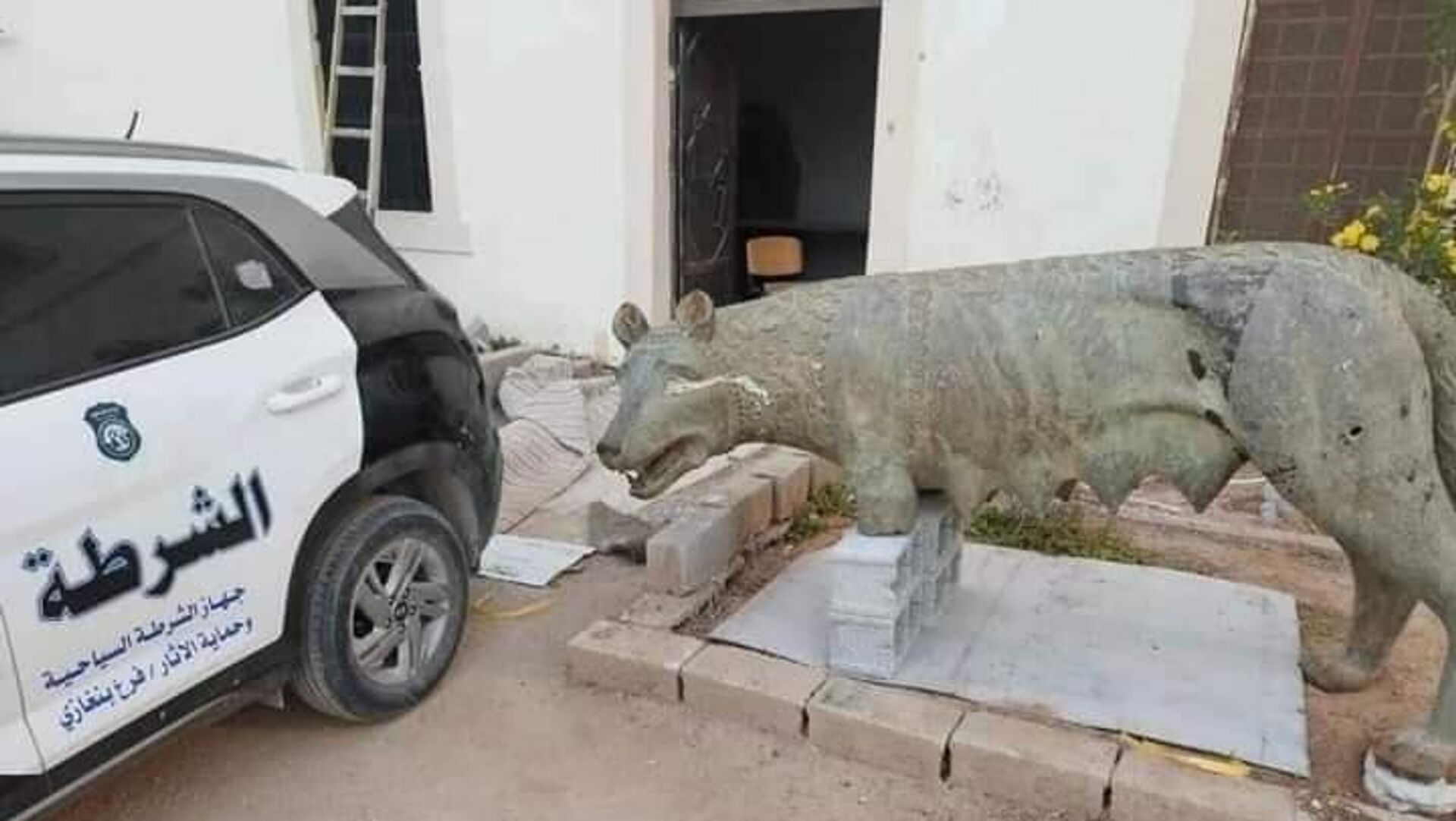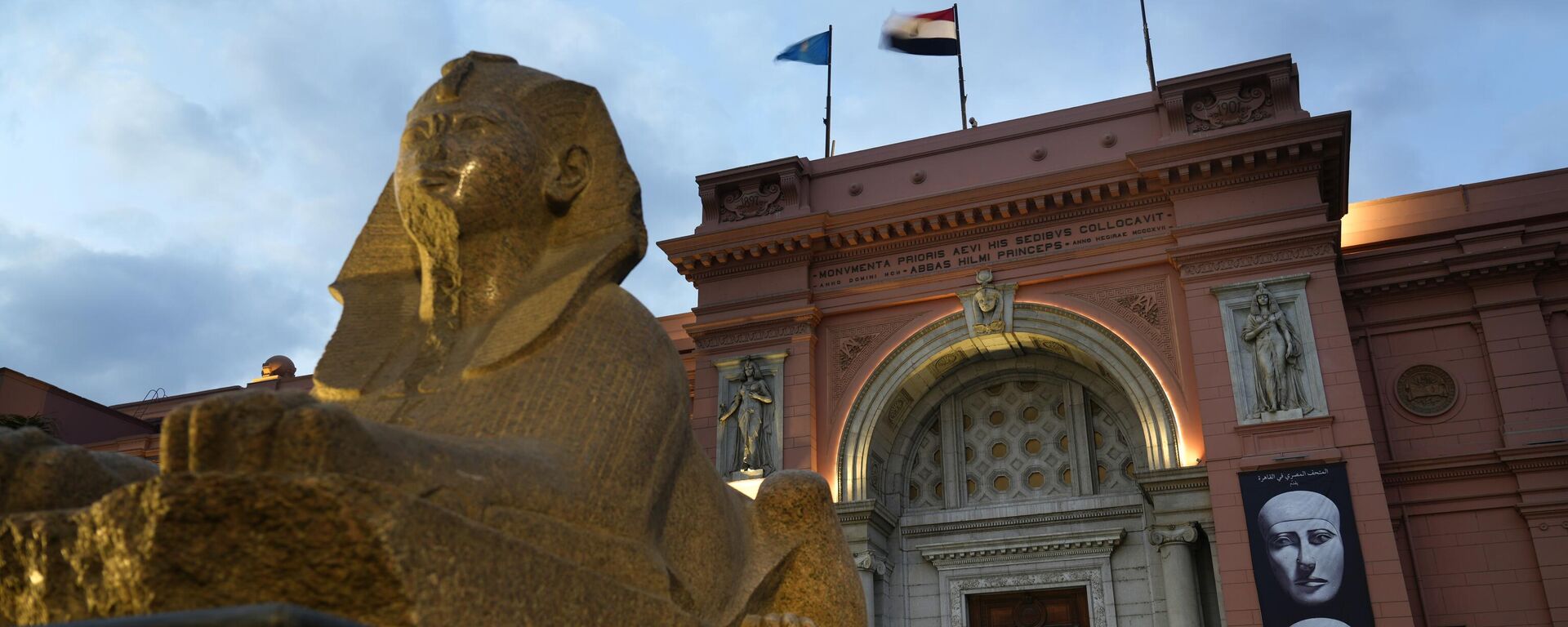https://en.sputniknews.africa/20230802/libya-recovers-capitoline-wolf-sculpture-lost-in-1970s-1061007103.html
Libya Recovers Capitoline Wolf Sculpture Lost in 1970s
Libya Recovers Capitoline Wolf Sculpture Lost in 1970s
Sputnik Africa
Over the years, many valuable Libyan antiquities have disappeared, looted by Europeans during colonial times, appropriated after independence, or plundered in... 02.08.2023, Sputnik Africa
2023-08-02T15:59+0200
2023-08-02T15:59+0200
2024-04-25T10:22+0200
libya
north africa
culture
colonialism
tourism
antiquity
italy
artifact
history
https://cdn1.img.sputniknews.africa/img/07e7/08/02/1061008345_0:0:720:406_1920x0_80_0_0_f0bdab272edb7e0f3f82c635fb2280e7.jpg
The tourism and antiquities department in the Benghazi police, eastern Libya, has recovered the artifact Lupa Capitolina, a large bronze wolf statue that once sat atop a column in the center of the city but disappeared in the 1970s.According to a statement by the department, authorities had received reports that the historic artifact dating back to the Italian colonial period was located on a farm in the Sidi Faraj area on the outskirts of the city of Benghazi. The farm near Benghazi is owned by Saied Mohammed Bourabida, who told police he bought the statue from a metal yard. It was determined that Bourabida did not know the artifact was public property.The police statement said the farm was raided by members of the arrest and investigation unit and the officer in charge of the confiscation operation, as well as patrols from the Benghazi Rescue Department and the Benghazi Antiquities Watch, in coordination with the prosecution office in southern Benghazi.The sculpture lost its front legs and the figures of two human infants suckling beneath it, representing Romulus and Remus, the mythical twin founders of Rome who were said to have been rescued and raised by a wolf. The artifact is now placed outside of the antiquities department in Benghazi, awaiting possible restoration.Two models of the artifact Lupa Capitolina were placed in Tripoli and Benghazi during the Italian occupation. The colonial authorities placed the statue in the new city center of Benghazi, which they built in the 1930s, as a sign of the connection between the ancient Roman settlement of Libya and their modern rule over the nation.Following declaration of independence by Libya, the country's authorities removed the statue, a replica of the famous Capitoline Wolf sculpture depicting a scene from the legend of the founding of Rome. However, in 1970s, the artifact went missing. The authorities spent decades searching for the colonial-era statue.
https://en.sputniknews.africa/20230509/italy-returns-four-smuggled-ancient-artifacts-to-egypt-1059140137.html
https://en.sputniknews.africa/20230729/russia-stands-for-libyas-sovereignty-territorial-integrity-putin-says-1060900836.html
libya
north africa
italy
Sputnik Africa
feedback@sputniknews.com
+74956456601
MIA „Rossiya Segodnya“
2023
News
en_EN
Sputnik Africa
feedback@sputniknews.com
+74956456601
MIA „Rossiya Segodnya“
Sputnik Africa
feedback@sputniknews.com
+74956456601
MIA „Rossiya Segodnya“
libya, north africa, culture, colonialism, tourism, antiquity, italy, artifact, history
libya, north africa, culture, colonialism, tourism, antiquity, italy, artifact, history
Libya Recovers Capitoline Wolf Sculpture Lost in 1970s
15:59 02.08.2023 (Updated: 10:22 25.04.2024) Over the years, many valuable Libyan antiquities have disappeared, looted by Europeans during colonial times, appropriated after independence, or plundered in the chaos following a NATO-backed uprising in 2011.
The tourism and antiquities department in the Benghazi police, eastern Libya, has recovered the artifact Lupa Capitolina, a large bronze wolf statue that once sat atop a column in the center of the city but disappeared in the 1970s.
According to a statement by the department, authorities had received reports that the historic artifact dating back to the Italian colonial period was located on a farm in the Sidi Faraj area on the outskirts of the city of Benghazi.
The farm near Benghazi is owned by Saied Mohammed Bourabida, who told police he bought the statue from a metal yard. It was determined that Bourabida did not know the artifact was public property.
"I remembered this statue in its position near the port from when I was young [...]. I had a smelting workshop and when I saw it by chance at the scrap dealer's I liked its shape and the quality of work so I bought it," he said as cited by media.
The police statement said the farm was
raided by members of the arrest and investigation unit and the officer in charge of the confiscation operation, as well as patrols from the Benghazi Rescue Department and the Benghazi Antiquities Watch, in coordination with the prosecution office in southern Benghazi.
"Members of the police managed to raid the farm and seize the Capitoline Wolf, which nursed the twins 'Romulus and Remus', who founded Rome in 753 BC, and which disappeared in the 70s, while it was near the port of Benghazi[...]. All legal measures have been taken regarding the incident," read the statement.
The sculpture lost its front legs and the figures of two human infants suckling beneath it, representing Romulus and Remus, the mythical twin founders of Rome who were said to have been rescued and raised by a wolf. The artifact is now placed outside of the antiquities department in Benghazi, awaiting possible restoration.
Two models of the artifact Lupa Capitolina were placed in Tripoli and Benghazi during the Italian occupation. The
colonial authorities placed the statue in the new city center of Benghazi, which they built in the 1930s, as a sign of the connection between the ancient Roman settlement of Libya and their modern rule over the nation.
Following declaration of
independence by Libya, the country's authorities removed the statue, a replica of the famous Capitoline Wolf sculpture depicting a scene from the legend of the founding of Rome. However, in 1970s, the artifact went missing. The authorities spent decades searching for the colonial-era statue.



